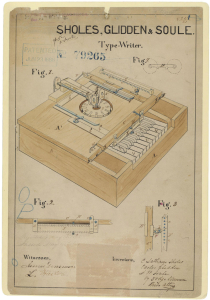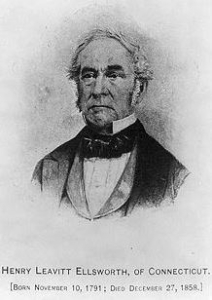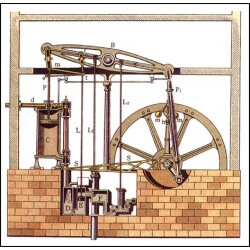The earliest origins of patents are ancient and obscure, but some countries have a long history of patenting in which we see the development of modern principles. Patents were common in Italian states by the 1420s, and in 1474 the Republic of Venice decreed that new inventions ‘had to be communicated to the Republic to obtain the right to prevent others from using them’ (Wikipedia).
Britain has a continuous tradition of patenting going back to the 15th century. In 1449 King Henry VI granted Flemish-born John of Utynam a 20-year monopoly for a method of making stained glass (for the windows of Eton College) previously unknown in England. Successive monarchs encouraged inventors and skilled craftsmen to settle in England with the aim of improving the country’s economic competitiveness.
Queen Elizabeth I granted patents for things such as soap, knives, sailcloth, sulphur, starch, iron and paper. During her reign and that of James I, patents became subject to increasing corruption and were given for inventions and trades that weren’t new. Public outcry forced James to ban all existing monopolies in 1610.Patent applications also provided easy revenue for the crown.
Following this crisis, the Statute of Monopolies was enacted in 1624. It declared that patents could be granted only for ‘projects of new invention’, provided they were not ‘contrary to law’ or ‘injurious to the state’, and for a limited time (14 years). These principles of novelty, public interest, and a limited timehelped shape patenting law in many countries, including the USA, Australia and New Zealand.
Over the next 200 years patenting practice in Britain developed through the courts. Many refinements were added, such as the requirement for a written description and detailed specifications, and the idea of granting patents for improvements to a known machine.
By mid-19th century, the British patent system was inefficient and couldn’t keep up with the Industrial Revolution. Beginning with the Patent Law Amendment Act of 1852, several statutes made improvements: a Patent Office to centralise processing; and patent officers to examine applications and, all-importantly, to investigate the novelty of an invention by searching through all the patent specifications of the past 50 years — those Victorians really loved paperwork!
 Across the Atlantic, inventors in the American colonies applied to the appropriate colony or state government and, if successful, their patent was individually enacted in law. From the late 18th century, state-level general patenting laws emerged, but inventors still needed to file applications in several states in order to protect their interests. This changed quickly after American Independence, with the passing of a federal law — the Patent Act of 1790.
Across the Atlantic, inventors in the American colonies applied to the appropriate colony or state government and, if successful, their patent was individually enacted in law. From the late 18th century, state-level general patenting laws emerged, but inventors still needed to file applications in several states in order to protect their interests. This changed quickly after American Independence, with the passing of a federal law — the Patent Act of 1790.
The Patent Act of 1836 created US Patent Office (now theUSPTO). This innovative law also ensured that lists of new patents were accessible to the public at libraries throughout the country, which dramatically reduced applications for already-patented items. The law also permitted the time limit on existing patents to be extended in some circumstances and, for the first time, allowed non-US citizens or residents to apply.
Not long after, in 1843, US Patent Office Commissioner Henry Ellsworth told Congress that he thought the period of “human improvement” must soon come to an end, judging by the incredible number of advancements already seen. This view has often been mistakenly attributed to a later Commissioner, Charles Duell, who in fact said in 1902, “…all previous advances in the various lines of invention will appear totally insignificant when compared with those which the present century will witness.” He turns out to be on the right side of history: between 1800 and 1900, just over 650,000 patents were granted, whereas in the following century the figured reached nearly 5.5 million (with the number ofapplications nearly double that).
 Between 1790 and 1880, patent applications in the US had to be accompanied by a small working model (no more then 30cm3). Some inventors submitted these even after it was no longer required, as it was often easier than explaining their invention in writing. The Patent Office sold these models off in 1925, and about 4,000 are held at the Rothschild Petersen Patent Museum.
Between 1790 and 1880, patent applications in the US had to be accompanied by a small working model (no more then 30cm3). Some inventors submitted these even after it was no longer required, as it was often easier than explaining their invention in writing. The Patent Office sold these models off in 1925, and about 4,000 are held at the Rothschild Petersen Patent Museum.
New Zealand’s first patenting law was the New Zealand Patents Act 1860. According to IPONZ, the first NZ patent was granted in 1861 to Arthur G. Purchas (‘doctor, clergyman and musician with wide-ranging interests’) and James Ninnis (‘English mining engineer’) for ‘An Invention for the preparation of the fibre of the Phormium tenax (flax) and other plants for manufacturing purposes.’
We’ve gone on to be a very creative nation, including AJ Hackett’s invention of the bungy jump and Hamilton’s jet boat (NZ Patent No. 125495) in 1961.
 According to theEncyclopedia of New Zealand, in 1900 we had the highest number of patent applications per capita in the world and in 2006 we still ranked fifth. Today IPONZ receives between 500 and 700 patent applications every month, with Plant Variety Rights (PVR) comprising their own category which contributes an additional 100-150 annually. This tradition of Kiwi ingenuity is often referred to as the ‘no. 8 wire’attitude, referring to our practical problem solving skills and the ability to fix or create anything (including John Britten’s V1000 superbike (NZ Patent No. 255607)) with a piece of fencing wire or whatever materials we have to hand. Long may it continue.
According to theEncyclopedia of New Zealand, in 1900 we had the highest number of patent applications per capita in the world and in 2006 we still ranked fifth. Today IPONZ receives between 500 and 700 patent applications every month, with Plant Variety Rights (PVR) comprising their own category which contributes an additional 100-150 annually. This tradition of Kiwi ingenuity is often referred to as the ‘no. 8 wire’attitude, referring to our practical problem solving skills and the ability to fix or create anything (including John Britten’s V1000 superbike (NZ Patent No. 255607)) with a piece of fencing wire or whatever materials we have to hand. Long may it continue.






